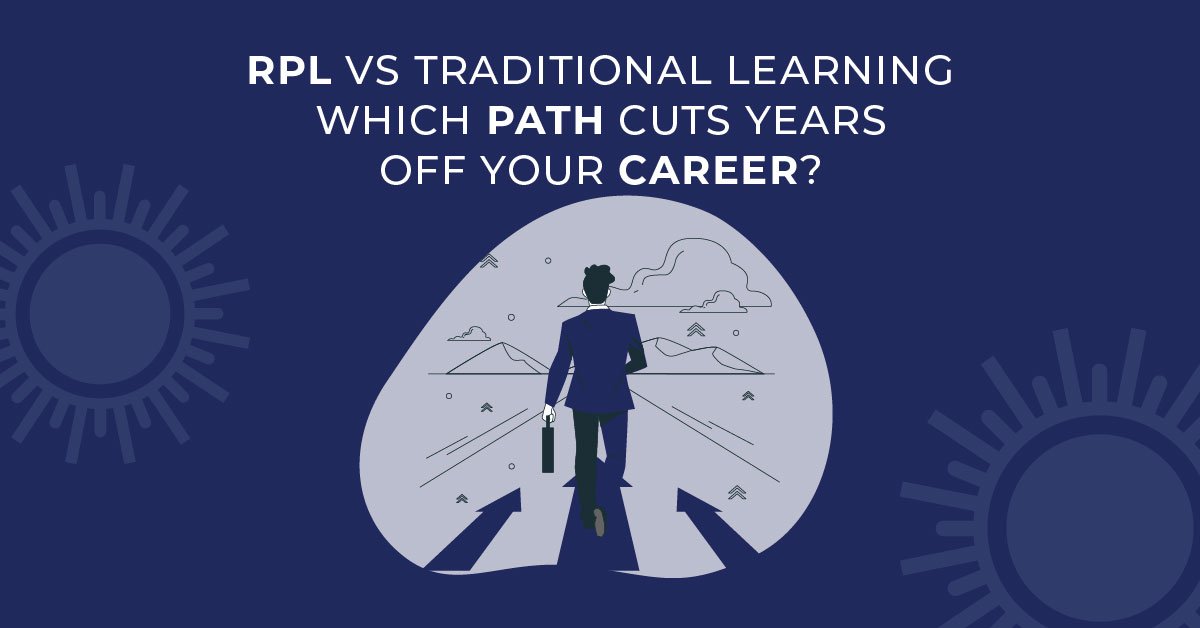
Are you spending years relearning skills and knowledge you already have? RPL vs. Traditional Learning presents a choice that could dramatically accelerate your career progression. Recognition of Prior Learning (RPL) allows you to obtain certifications based on your existing skills and experience, saving both time and money. Instead of sitting through courses covering material you’ve already mastered, RPL offers a pathway to convert your work experience and life skills into recognized qualifications.
While traditional learning follows a fixed schedule with formal training programs, the RPL pathway provides a flexible alternative specifically designed for professionals with relevant experience.
Through the RPL assessment process, you can submit evidence like work samples and reference letters to gain formal qualifications, often without stepping away from your current job.
An RPL certification can be earned in just 4-8 weeks rather than the 6 months to 2 years traditional study might take. Furthermore, RPL training is significantly more affordable and cost-effective, with qualifications starting at just $600, much cheaper than complete courses.
But which option is right for you? At a minimum, RPL typically requires around 4 years of industry experience, particularly suited to those with substantial work history or professionals transitioning careers. In this guide, we’ll compare both paths, examining how each affects your time investment, career advancement, and financial commitment, helping you choose the option that best fits your situation.
Understanding the Two Paths: RPL vs Traditional Learning
The journey to qualification can take different paths depending on your experience and learning preferences. Let’s explore the two main options available.
What is RPL, and how does it work?
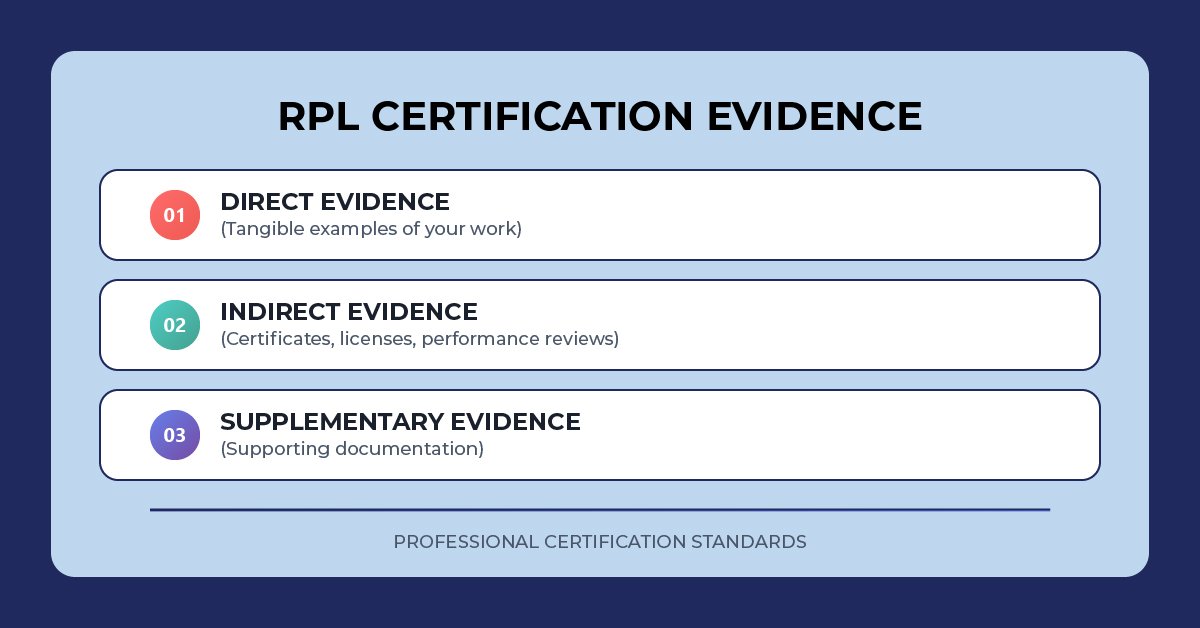
Recognition of Prior Learning (RPL) is an assessment-only process that evaluates competencies acquired through various learning experiences. This pathway acknowledges skills built from formal education, workplace training, and life experiences. The RPL process typically involves several stages: identifying required evidence, advising applicants, assessing submissions, and recording outcomes.
When pursuing an RPL certification, you’ll need to provide evidence that demonstrates your existing skills. This evidence generally falls into three categories:
- Direct evidence (tangible examples of your work)
- Indirect evidence (certificates, licenses, performance reviews)
- Supplementary evidence (supporting documentation)
.
RPL assessments must be conducted by a qualified assessor with expertise in the subject area and follow the same standards as other qualification assessments.
What is traditional learning, and who is it for?
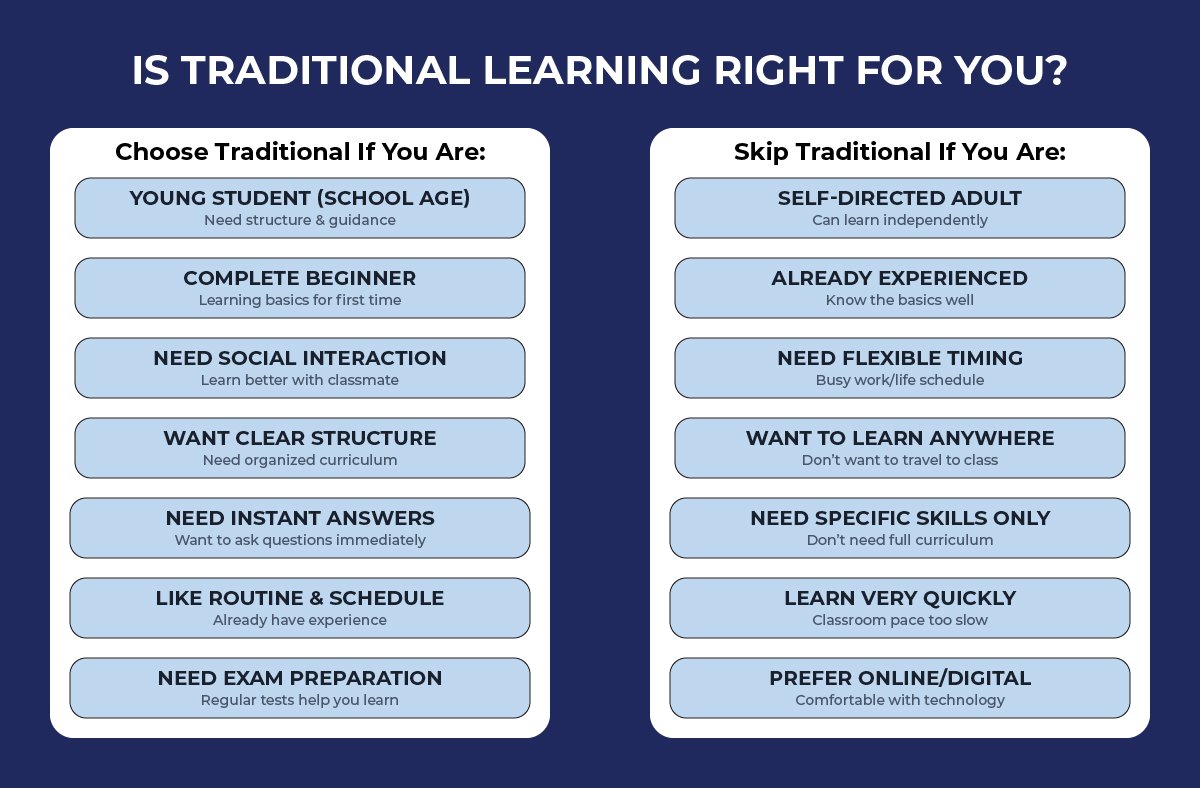
Traditional learning follows a structured approach or structured learning with teacher-led instruction in physical classroom environments. This method involves standardized curricula delivered in person, with regular examinations to assess comprehension.
Traditional education primarily serves young learners, teenagers, and those yet to join the workforce. The classroom setting promotes social interaction, discipline, and routine while allowing immediate clarification of questions. Moreover, traditional learning excels for beginners seeking foundational knowledge through guided instruction.
Key differences in structure and delivery
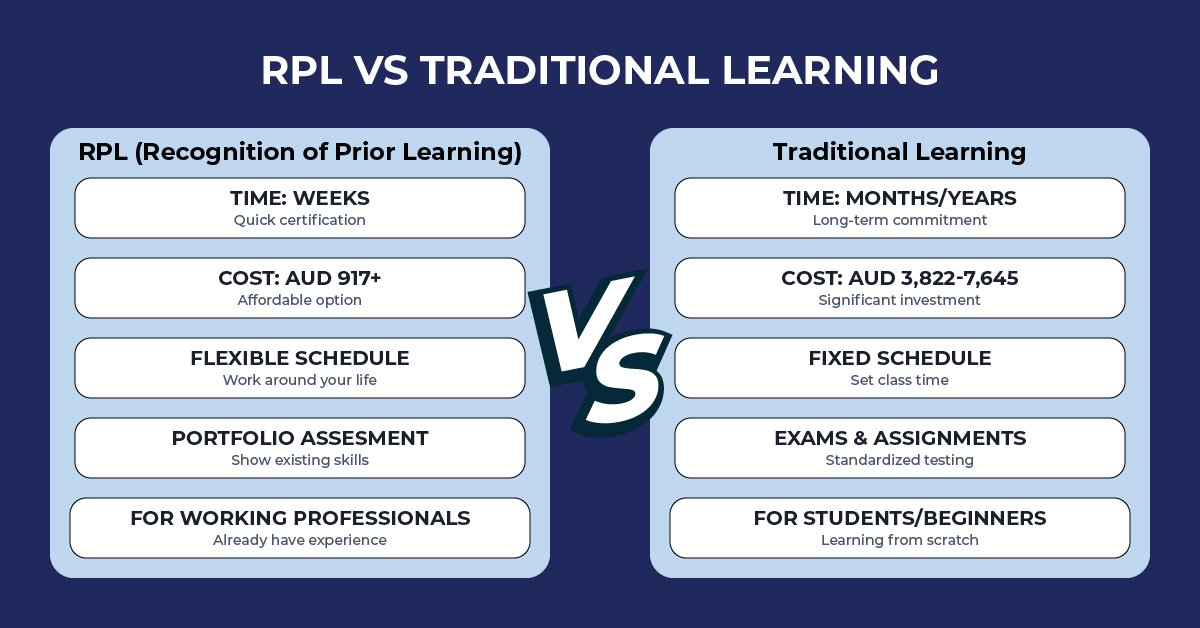
The most notable difference between these paths is time investment. RPL certification can be completed in weeks, whereas traditional programs require months or years.
Cost varies substantially too, with RPL qualifications starting around AUD 917.39 compared to traditional courses costing between AUD 3,822.48-7,644.95.
Additionally, delivery methods differ fundamentally. Traditional learning adheres to fixed schedules with predetermined curricula, whereas RPL offers exceptional flexibility for working professionals.
Assessment approaches also contrast sharply—RPL evaluates evidence of existing skills through portfolios and demonstrations, while traditional methods rely on exams, assignments, and standardized tests.
Both pathways lead to nationally recognized qualifications under the Australian Qualifications Framework (AQF), ensuring equal recognition by employers.
Time, Cost, and Flexibility: Which Saves You More?
When choosing between educational pathways, practical considerations often determine which option delivers the most value. Let’s examine how RPL and traditional learning compare in terms of real-world demands.
Time commitment: Weeks vs Years
The time difference between these paths is substantial. Traditional education typically requires 12 months for a Certificate IV or up to 3 years for a diploma. In contrast, RPL certification can be completed in just 4-6 weeks, depending on your evidence and experience. This dramatic reduction occurs because RPL evaluates what you already know rather than teaching new material. For busy professionals, this means getting qualified and advancing your career in a fraction of the time it would take through conventional study.
Cost comparison: RPL assessment vs tuition fees
The financial equation heavily favors RPL for experienced workers:
- Traditional courses often cost between AUD 3,822.48 and AUD 7,644.95 for qualifications like a Certificate IV in Business
- RPL qualifications start from approximately AUD 917.39
- Traditional learning involves additional expenses for textbooks, materials, and potential income loss
Essentially, RPL focuses solely on assessing your skills rather than delivering comprehensive training, subsequently reducing costs. Furthermore, by accelerating your qualification timeline, RPL enables earlier access to higher salary brackets, creating a double financial advantage.
Flexibility: Self-paced vs fixed schedules
Traditional learning adheres to rigid timetables with predetermined curricula. Students must adjust their lives around class schedules, which proves challenging when balancing work and family commitments. Conversely, RPL offers unmatched flexibility – you submit evidence at your convenience without fixed deadlines. This self-paced approach means you can pursue a qualification without disrupting your current employment or personal responsibilities. Notably, many RPL providers offer 24/7 online platforms for uploading work samples and documentation, making the process accessible regardless of your schedule or location.
Career Impact: How Each Path Shapes Your Future
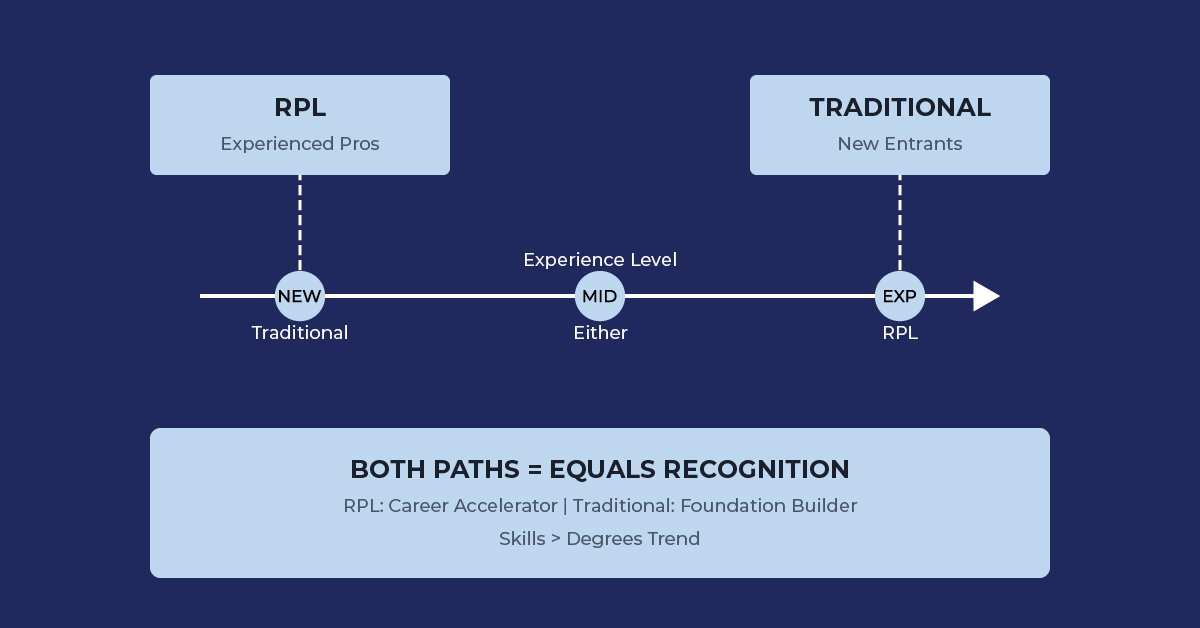
Beyond time and cost considerations, your choice between RPL and traditional learning profoundly influences your long-term career trajectory. Each path creates distinct professional opportunities based on your current experience level and future goals.
RPL certification for experienced professionals
RPL qualifications serve as career accelerators for seasoned workers by converting existing skills into recognized certifications. Throughout our research, we’ve found that RPL propels individuals along their career trajectories more rapidly, opening doors to higher-level positions without redundant training. Professionals with substantial work history benefit in several key ways:
- Enhanced employability – RPL provides nationally recognized qualifications that align skills with industry-accepted standards
- Career advancement – Formal recognition enables professionals to apply for promotions and senior roles previously out of reach
- Competitive positioning – RPL qualification demonstrates verified skills, making you a trusted professional in your field
For regulated industries such as healthcare, construction, and education, RPL qualifications fulfill mandatory licensure requirements, ensuring you can work legally in your profession.
Traditional training for foundational knowledge
Traditional education excels at providing comprehensive theoretical understanding and deeper foundational knowledge. Indeed, fields like engineering, law, and medicine rely heavily on academic qualifications as entry points. Formal education primarily benefits those entering a field for the first time or changing careers entirely.
Additionally, traditional learning fosters holistic development through exposure to diverse subjects beyond immediate interests. This approach helps develop essential life skills such as discipline, time management, and effective communication—competencies crucial for success across all professions.
Recognition and employer acceptance
Employers and industry bodies recognize both pathways as legitimate, although their perceptions differ based on role requirements. According to multiple sources, RPL qualifications hold equal value to those obtained through traditional methods since both meet the same regulated standards. Consequently, large employers, including Accenture, IBM, and even the US government, have relaxed or removed degree requirements for many roles.
As skills become increasingly specialized, many organisations now focus on demonstrated competencies rather than educational background. Ultimately, employers evaluate candidates based on how they’ll improve the company’s mission, boost the bottom line, and fit organizational culture.
Choosing the Right Path Based on Your Situation
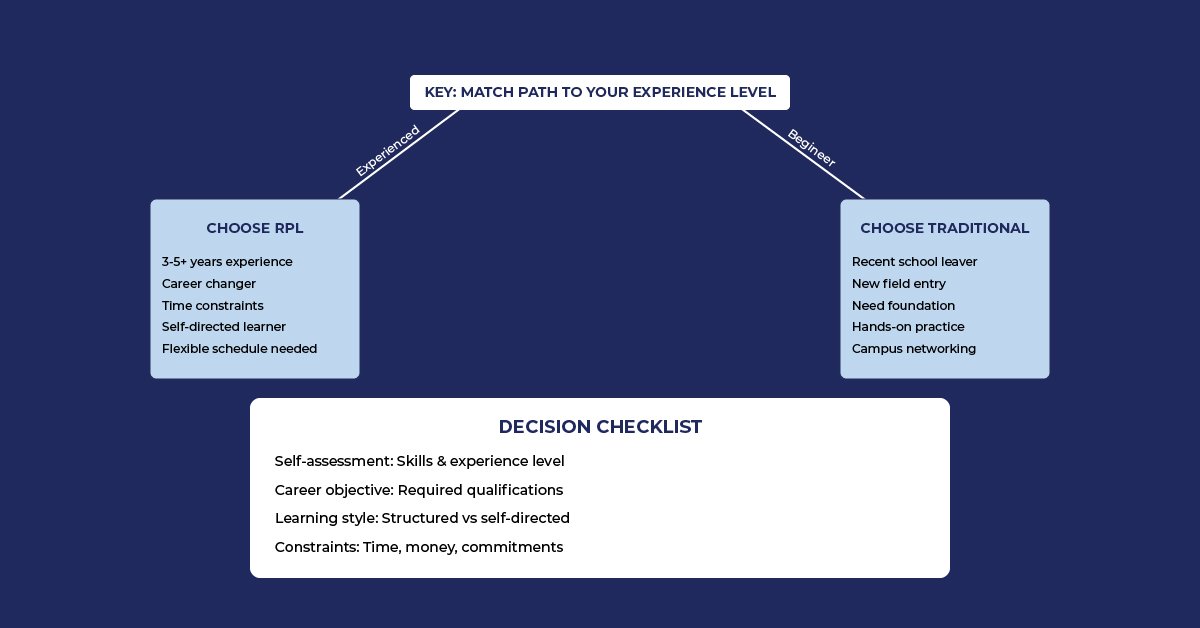
Deciding between educational pathways ultimately depends on your unique circumstances and career aspirations. Let me help you determine which option aligns best with your professional journey.
When RPL is the better option
First and foremost, RPL certification proves ideal if you possess significant work experience in your field. This pathway is particularly suited for professionals with at least 3-5 years of relevant industry experience who seek to formalize their existing skills quickly. Career changers who seek to leverage transferable skills from previous roles also benefit from RPL assessment procedures. Besides time considerations, RPL suits those unable to take extended periods away from work or family commitments, offering a flexible, self-paced approach to qualification.
When traditional learning makes more sense
Traditional education remains the superior choice primarily for recent school leavers or those entering entirely new fields without prior experience. If you require comprehensive foundational knowledge or in-depth theoretical understanding, structured classroom environments provide systematic learning from the ground up. Professions demanding hands-on laboratory work, clinical practice, or performance-based assessment typically necessitate traditional training approaches. Furthermore, those valuing face-to-face instructor support, campus facilities, and networking opportunities find traditional learning environments more beneficial for long-term career development.
Checklist: Experience, goals, and learning style
Before making your decision, evaluate these crucial factors:
- Self-assessment: Honestly evaluate your existing skills, knowledge gaps, and prior experience level
- Career objectives: Research qualifications required in your desired field and what employers value
- Learning preferences: Consider whether you thrive in structured environments or prefer self-directed study
- Practical constraints: Assess available time, financial resources, and family/work commitments
- Support needs: Determine if you need direct instructor guidance or can learn independently
Ultimately, many career changers with substantial experience choose RPL to avoid repeating already-mastered material, whereas those building foundational knowledge typically benefit from traditional education’s comprehensive approach. Seeking advice from career counselors or industry experts can provide valuable insights based on your specific situation.
Comparison Table
| Aspect | RPL (Recognition of Prior Learning) | Traditional Learning |
|---|---|---|
| Time to Completion | 4-8 weeks | 6 months to 3 years |
| Cost | Starting from AUD 917.39 | AUD 3,822.48 – 7,644.95 |
| Target Audience | Experienced professionals with 4+ years of industry experience | Recent school leavers, beginners, young learners |
| Delivery Method | Flexible, self-paced, online submission | Fixed schedules, classroom-based, structured approach |
| Assessment Type | Evidence-based (work samples, portfolios, reference letters) | Exams, assignments, and standardized tests |
| Requirements | Substantial work experience and evidence of existing skills | No prior experience needed |
| Learning Structure | Assessment-only process | Teacher-led instruction with standardized curricula |
| Best Suited For | – Converting existing skills to qualifications – Working professionals – Career advancement |
– Building foundational knowledge – New field entry – Hands-on laboratory work |
| Key Benefits | – Time and cost savings – Career acceleration – Workplace flexibility |
– Comprehensive theoretical understanding – Social interaction – Direct instructor support |
Choosing between RPL and traditional learning ultimately comes down to your unique circumstances and career goals. Throughout this comparison, we’ve seen how RPL offers significant advantages for experienced professionals seeking to formalize their skills. Undoubtedly, the time-saving benefit stands out—completing qualifications in weeks rather than years allows professionals to advance their careers without unnecessary delays.
Financially speaking, RPL presents a compelling case with costs starting around AUD 917 compared to several thousand dollars for traditional courses. Additionally, the flexibility of RPL accommodates busy work schedules, making qualification accessible without career interruption.
Nevertheless, traditional learning remains essential for those entering new fields or requiring comprehensive foundational knowledge. The structured environment and instructor guidance provide valuable support for beginners still developing core competencies.
Before making your decision, assess your experience level, career objectives, and learning preferences honestly. Consider practical constraints like time availability and financial resources. The right path will align with both your current situation and future aspirations.
Though RPL won’t replace traditional education entirely, it certainly creates an alternative route that respects and validates workplace experience. Both pathways lead to the same destination—nationally recognized qualifications that enhance career prospects and earning potential. The choice between spending weeks versus years obtaining your certification could significantly impact how quickly you reach your professional goals. After all, the most efficient path to qualification is the one that acknowledges what you already know while preparing you for where you want to go.

